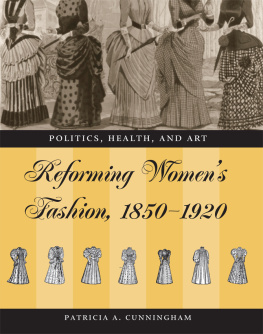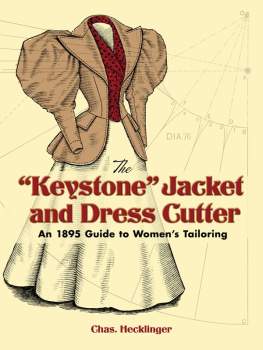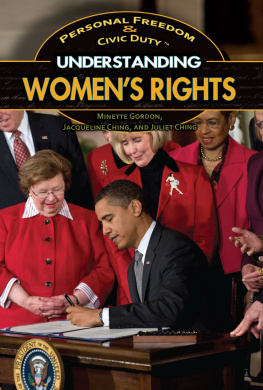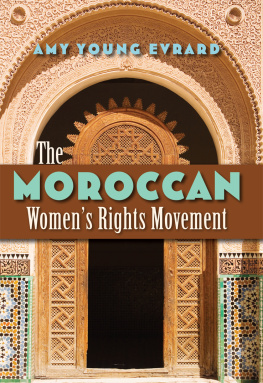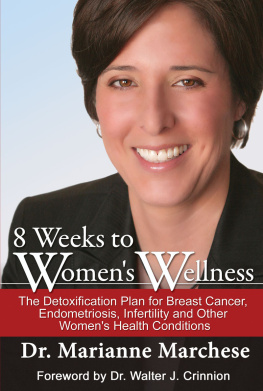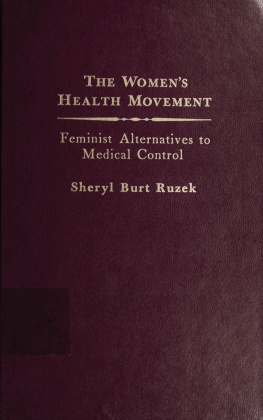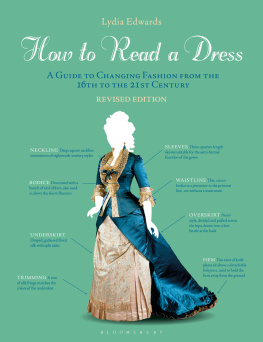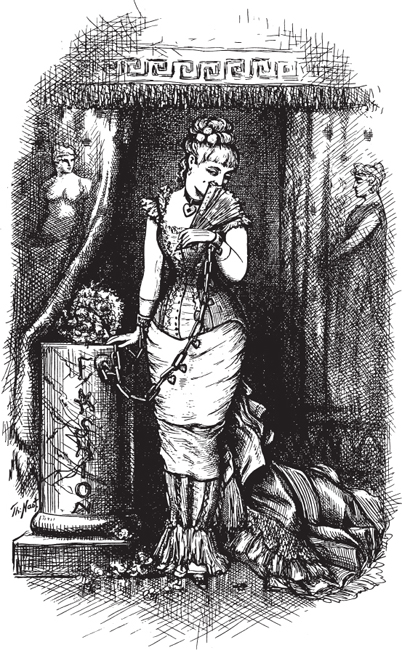Reforming Womens
Fashion, 18501920
Politics, Health, and Art
Patricia A. Cunningham
The Kent State University Press
KENT & LONDON
2003 by The Kent State University Press, Kent, Ohio 44242
All rights reserved
Library of Congress Catalog Card Number 2002001852
ISBN 0-87338-742-2 (cloth)
Manufactured in the United States of America
06 05 04 03 02 5 4 3 2 1
Library of Congress Cataloging-in-Publication Data
Cunningham, Patricia A.
Reforming womens fashion, 18501920 : politics, health, and art /
Patricia A. Cunningham.
p. cm.
Includes bibliographical references and index.
ISBN 0-87338-742-2 (hardback : alk. paper)
1. CostumeUnited StatesHistory.
2. CostumeEuropeHistory.
3. Womens rightsUnited States.
4. Womens rightsEurope.
5. FashionPolitical aspectsUnited States.
6. FashionPolitical aspectsEurope.
I. Title.
GT610.C85 2002
391.0097dc21
2002001852
British Library Cataloging-in-Publication data are available.
For reasons that require no explanation, I dedicate my work
to the memory of my parents, brother, and aunt
Clara Talley Cunningham
Guy Clement Cunningham
Richard Alan Cunningham
Patricia Cunningham Flesh
and to honor family members
William Edward Cunningham
Linda Flesh Brown and Bill Brown
Craig R. Hassler
Contents
This book began as a project on aesthetic dress in America for a National Endowment for the Humanities Summer Seminar at Yale University and metamorphosed into a broader investigation of womens dress reform in Europe and America. It became evident that not only was the dress reform movement diverse geographically but its major proponents had multifaceted interests, backgrounds, and solutions to what they perceived to be problems with womens clothing. In addition, the period that the various movements were active covered a time span of more than fifty years. In some respects, the broader study came about as a response to claims in costume history literature that dress reformers had no effect on fashion. Primary sources read during the initial investigation of aesthetic dress suggested otherwise.
This book offers the views of women and men who believed that fashion was either unhealthy or unaesthetic, or both. They had differing motivations. Some took a political view, believing that fashion had effectively limited womens roles and thus their potential for any real impact on society. Others firmly believed that womens fashionable dress had become a detriment to good health. Not a few thought that fashion went against true ideals of natural beauty. While various and sometimes opposing viewpoints are represented here, the overarching goal of this study is to reveal the many ways in which people sought to improve womens clothing from the midnineteenth century to the early twentieth century and to examine the impact they had on fashion at the time and on dress of the future. This book is arranged according to the types of garments that were promoted to correct or replace fashionable dress. Hence, it focuses on women wearing trousers, altering their underwear, and adopting aesthetic or artistic clothing.
As much as possible, I have sought to allow the ideas of the reformers to come through, to keep the text true to their voices. Although I have offered theory regarding the meanings of dress, I have chosen not to interpret the text from a late-twentieth-century feminist or postmodern perspective. While the construction of gender was central to why women dressed the way they did, during the nineteenth century the approaches to gender issues were different from the ways we might pursue them today. My intention is to offer a sympathetic interpretation or view (the reader may view it as bias) without imposing, or layering, too many twentieth-century notions over already complex nineteenth- and early-twentieth-century ideas regarding fashion, gender, and womens rights and roles.
As in all worthwhile endeavors, there are restraints. The major limitation placed on the subject of this study was that of restricting it to an examination of womens reform clothing worn in Europe and America, specifically England, Germany, Austria, the Netherlands, Scandinavia, the United States, and, to a limited extent, France. Only main garments (dresses or gowns, and their replacements) and underwear are examined, although there is a great amount of literature regarding the abuses of other clothing items, particularly footwear and hats. Also, parallel efforts that were made to reform mens dress have not been considered. My focus on types of garments rather than on themes is an appropriate perspective for a costume historian, who is still interested in the reciprocal impact that changes in dress behavior have on society and culture, especially on womens roles and perceptions of themselves.
If clothing reflects the times in which it is worn (how could it be otherwise?), then efforts to change the status quo of fashion in any way, radical or not, also reflect the times. Certainly reform went against the normal ways of the world. For women to wear unfashionable clothing put them on the defensive; they had to explain why they were transgressing. The explanations that appeared to be the most logicalfor improved health, for ease and comfort, for the beauty linked to good healthno doubt gave reform garments some credibility. An understanding of the motivations, rationale, and arguments given by these reformers for altering their clothing certainly lends insight into late-twentieth-century assumptions about dress in general notwithstanding the residual carryover (greatly transformed by the turn of the twenty-first century) of conservative ideas regarding appropriate dress for occasion, place, activity, and time of day.
The claims of dress reformers that fashionable dress was unhealthy, especially the tight corset, is an issue that scholars have sought to test. Yet, the truth is that if women like Mary Tillotson believed that their garments were causing them ill health, then that was their reality. It is something we cannot test today. Unless they inform us, we cannot know for sure. However, through an examination of the literature of reform, through the reformers own words, we can discover their attitudes and beliefs and examine their arguments and visual proof of their efforts in drawings, illustrations, and photographs as well as in the actual reform garments that remain.
My goal in writing this book was to determine the extent of dress-reform efforts in America and Europe from the context of the time period in which they took place. One major objective was to reveal the breadth of the reform efforts and thus broaden our understanding of why the reformers felt a need to improve womens dress. Another desire was to reveal the legacy of the reformersthat is, to show their influence on fashion by uncovering the ways in which reform styles became fixed elements in the repertory of clothing styles worn for different activities.
The reformers suggestions for new styles of garments were not advanced simply to acquire something new to be in fashion, or today we might say to be hip; their ideas for improved clothing were based on a higher level of motivation and were infused with moral aesthetic notions and health-related arguments. As such, the dress reformers concerns were very much connected to all efforts toward improvements in social conditions that took place during the nineteenth and early twentieth centuries. These efforts were seen in many aspects of culture and included individuals in many fields such as education, womens rights, temperance, health, as well as the arts: dance, theater, music, fine and decorative arts, and architecture. In many respects these reformers were fashion futurists. I hope that the reader will want to learn more about these reformers and their ideas and in turn undertake further investigation of

